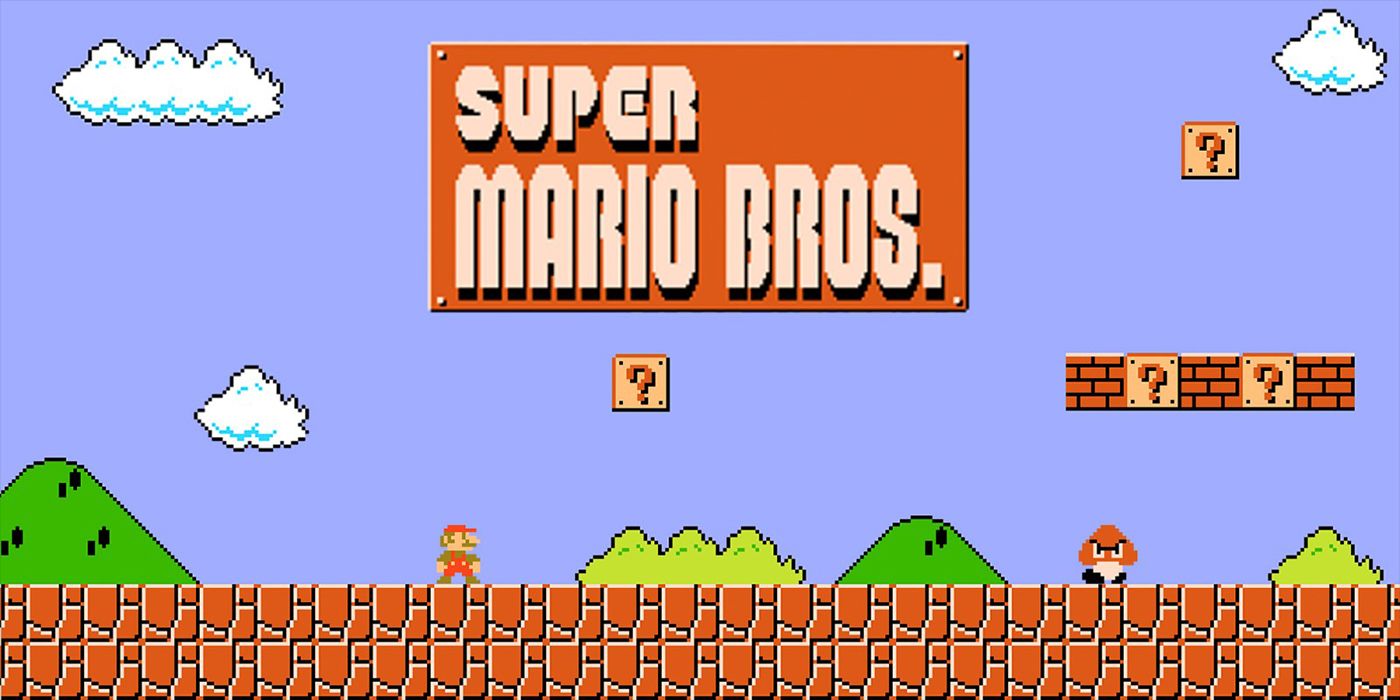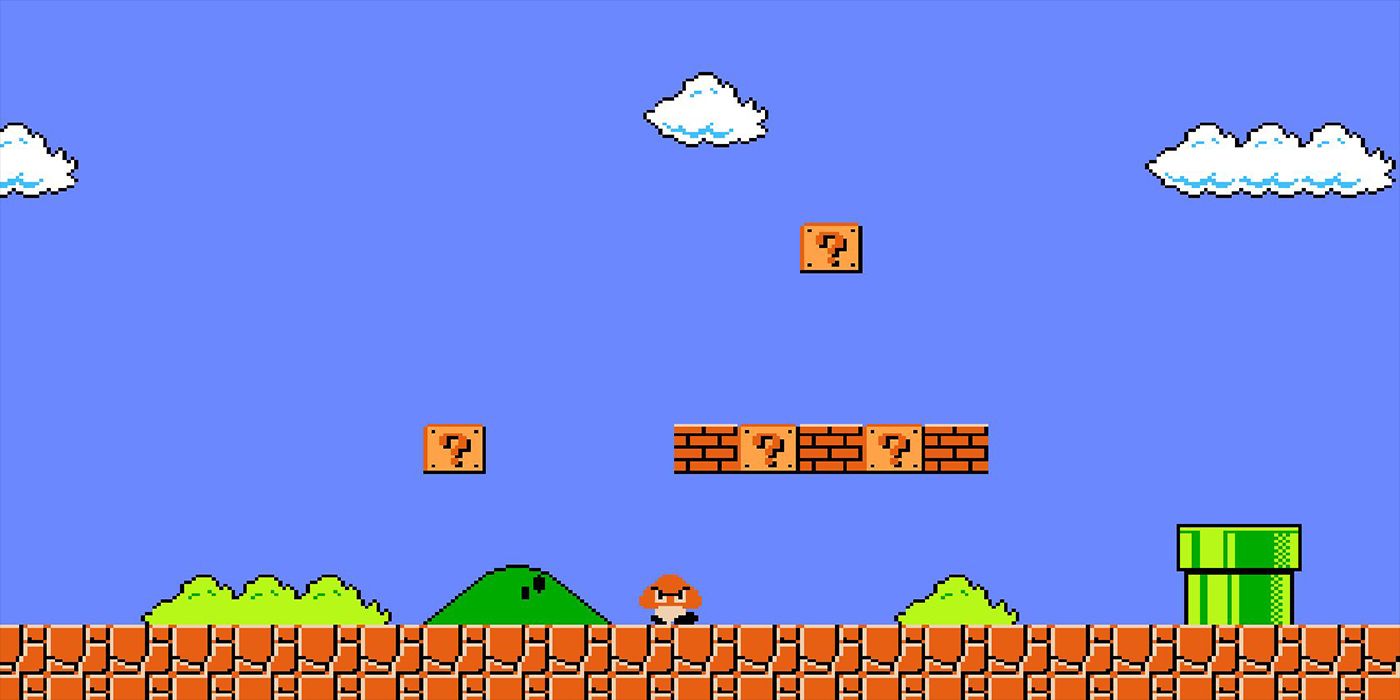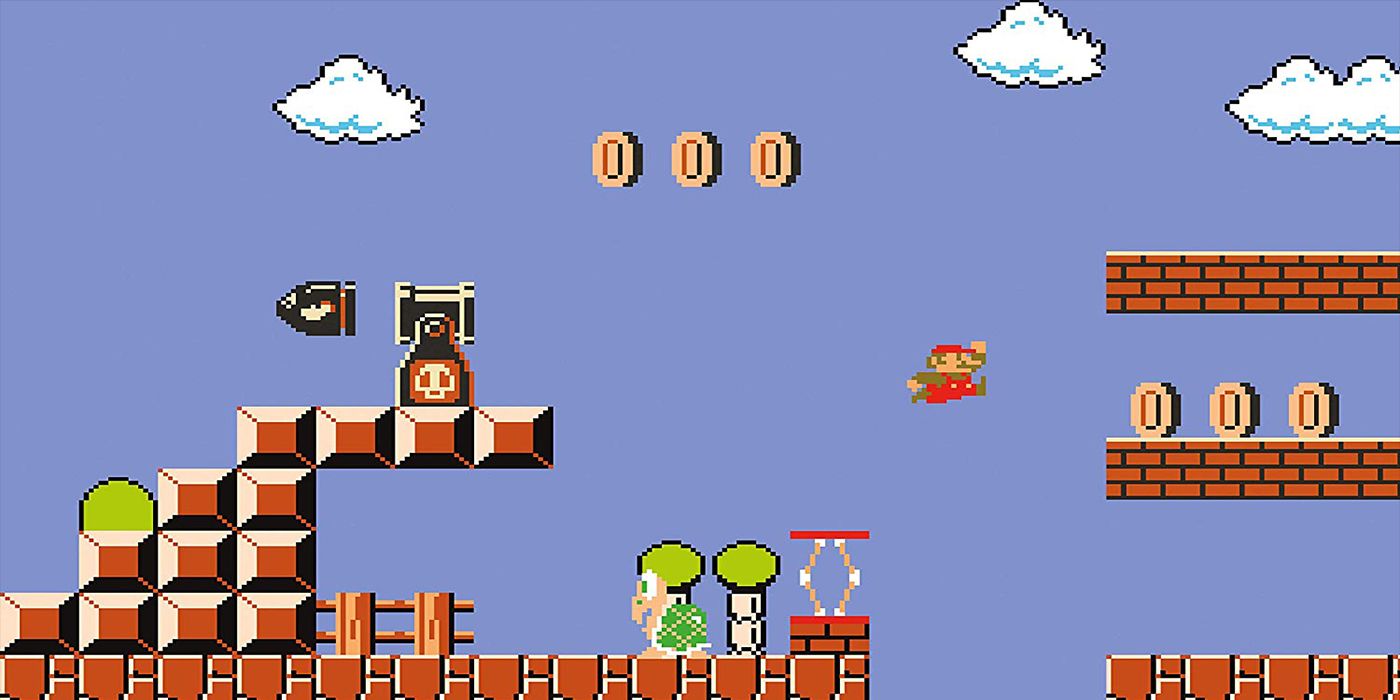If there's a single character that represents video games as a whole, it's Mario. The Italian plumber has been featured in hundreds of games, in and out of the Super Mario Bros. franchise, and is easily one of the most iconic characters of gaming. That success is largely due to Nintendo's explosive popularity in the '80s and '90s when Mario moved from the arcade into homes with Super Mario Bros., the first in what would become a mind-numbingly large lineup of games.
Mario has accomplished a lot of things throughout his career, from thwarting Bowser to saving video games after the market crashed. But Mario's has had an even greater effect than that. In fact, one of the character's greatest achievements is often overlooked. Not only is the little plumber that could an iconic video game character, but he helped perfect video game tutorials, even though there's never an actual tutorial in Super Mario Bros.
World 1-1 of Super Mario Bros. is iconic for a bunch of reasons. It marked a new chapter of Mario's journey, which is intrinsically linked to Nintendo's very DNA. The bright background, the jolly music, and the general tone of the level convey a pleasant feeling. It's one of the first worlds that gamers could actually lose themselves in - an impressive feat for any 2D platformer.
But World 1-1 isn't special just because of that, it's special because of how it conveys information to the player. Mario starts off placed on the left side of the screen, a direct indicator that the player should be moving to the right. Any players that try to backtrack after taking their first few steps will quickly realize that they can't move the screen back, immediately telling them that the entirety of this journey will be taking place from left to right.
From there, players are going to see two things. The first is a floating block with a question mark on it. The other is an aggressive-eyed little creature, otherwise known as a goomba - one of gaming's most iconic enemies, marching its way toward Mario with gusto. The player has two options here. They can either let the little guy hit them, killing Mario and causing the life counter to tick down by one, or they can jump - either avoiding the creature or landing on its head in the process.
Landing on the creature's head signals to the player that enemies can be thwarted with a well-placed stomp. Even if they miss that, they now know how to jump. Those that died only lost about 5 seconds of progress, hardly a drop in the bucket. That quick goomba encounter has effectively set the player up with most the knowledge they need to beat the entire game. In no time flat, they'll be prepared for Super Mario Bros. world record speedrunning competitions.
Now knowing how to jump, most players are going to start hitting that fancy flashing brick. Surprise, surprise, a coin pops out. A pleasant little sound plays, 100 points are added to the player's score, and the coin counter increases by one. Flashing blocks are a good little reward for vanquishing Mario's first foe, and three more are placed right after the first one. One of those three debuts the most iconic power-up in video games, the mushroom.
The mushroom is a peculiar little thing. Its general shape is the same as the goomba, minus the feet and angry eyes, and it moves a lot quicker. For most players, they'll be put in a position where they can't avoid the mushroom, making Mario grow in size. Like Portal's Companion Cube, players can rest assured that the fancy blocks will never hurt them. Instead, they just hand out prizes. Big Mario can also smash the standard brick-looking blocks, and sometimes those will give away free coins, power-ups, and even lives.
Finally, the first secret in Super Mario Bros. is hidden in the first thirty seconds of the game. Players that are curious or clever enough to play around on the big green pipes will find themselves transported down to an underground part of the level filled with coins. It's also a short cut, allowing the level to be finished in a fraction of the normal time. There are plenty of other secrets hidden in 1-1 for players that miss the shortcut, too, and they're much easier to find.
World 1-1 isn't impressive because it teaches players how to play the game, it's impressive because it lets them figure it out for themselves purely based on the level design. It's incredibly intuitive, and still dwarfs a lot of what gamers run through today. It helped establish the basic fundamentals of tutorials, creating a design philosophy that is still used in triple-a games. Practically anyone can pick up a controller and start playing Super Mario Bros. without any knowledge or experience in other games.
That's what makes Super Mario Bros. so special. For many, it's the first real experience they had with video games at home. The fact that it managed to be so accessible to so many helped lay the foundation of what games are today. World 1-1, quite simply, is one of the best video game levels of all time, and possibly the most iconic. People have even tried to sell copies of Super Mario Bros. for a million dollars largely based on the merit of its cultural relevance.
Even today, tutorials are something that games frequently get wrong. A lot of the time, tutorials come off more as hand-holding than they do as helpful. The issue is especially apparent in RPGs, where tutorials will often spend hours diving into the finer mechanics of a game rather than letting players figure things out for themselves. There's something to be said about the increased complexity of those games, but it still isn't an ideal circumstance.
Super Mario Bros. is a timeless experience. It isn't the best in the franchise, but it is one of the most iconic Mario games out there. It means so much to people that an unopened copy of Super Mario Bros sold for $100,000. There's no telling how long Mario will manage to stay an important part of gaming culture, but it's safe to assume that he isn't going anywhere given how long he's been around.



